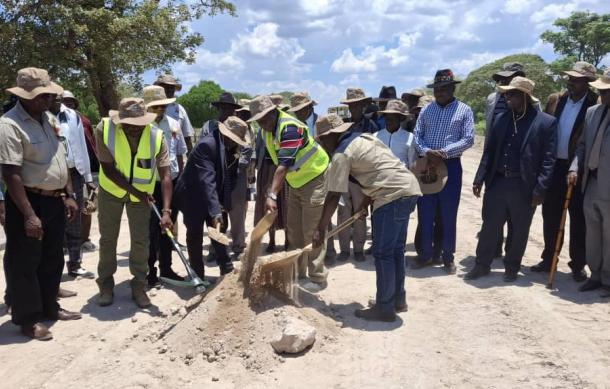
Phase one of the Ndiyona-Djaradjara road in the Kavango East Region has started.
The road will go through Ndiyona-Djaradjara-Kandjara-Dcude-Cwiba-Khaudum-Shikerete and link up with the Tsumkwe road.
The road currently comprises a two-track road, which local farmers and other commuters carved over time to form a road.
However, the road has never been debushed, leaving the track in unpassable condition as it is encroached by thick bushes and deep sand.
Ndiyona Constituency Councillor, Laurentiuse Mukoya, said the road's current state makes travelling impossible in dry and wet conditions.
"You can drive two hours to reach those villages when responding to wildfire or criminal activity, even medical assistance. Residents have adapted to this challenge in various ways, often resorting to traditional methods of transportation. For instance, villages in the inland use cow-drowning slides to transport people during emergencies. Payment methods can include the use of livestock, such as cows, to cover transportation costs in the absence of cash. However, these adoptions are not sufficient to address the urgent need that arises in critical situations."
Mukoya said this reduces quality of life because residents cannot access essential services on time.
Phase one of the Ndiyona Djaradjara district road is 35 kilometres long.
Overall, the road is 200 kilometres long and travels over two regions, namely Kavango East and Otjozondjupa.
The government, through the Roads Fund Administration, is fully funding the project with approximately N$29 million.
The project will be implemented over 12 months.
"I don't think anybody will doubt why we need a road here, because currently, as other speakers have said, in the Kavango East there are few roads but also many other regions. We have a backlog, but it is a backlog that we are ready to face. There is a lot of sand and bushes, and therefore it is very difficult to transport. Once this road is completed, even the first phase of 35, it will improve connectivity and access to essential services, enhance road safety, and also create economic opportunities for local communities. We in the transport sector believe very strongly that roads bring development. First, you must have a road and whatever development will follow," said Works and Transport Minister John Mutorwa.
Mutorwa said this strategic intervention underscores the government's commitment to improving the quality of life in rural areas.





